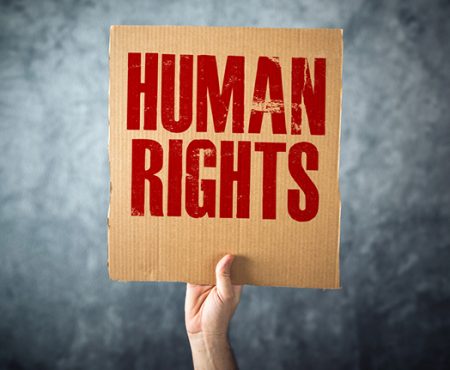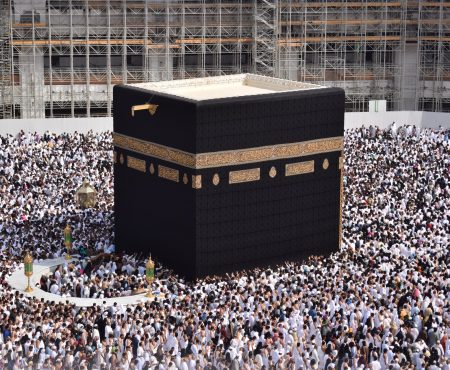What is Hijab In Islam? Is Hijab in the Quran?
Hijab, in Islam, literally means a barrier, curtain, or screen. The headscarf worn by Muslim women that many limit the hijab to is actually only one form of hijab. What many may not know is that the Muslim hijab is far more than just a piece of fabric used by women to cover their head. It is also not limited to women, as men are expected to observe the hijab as well. For Muslims, the concept of hijab is a way of life through dignity and modesty in one’s behavior and appearance.
Some may be surprised at how men and women are addressed in the Qur’an when it comes to the issue of hijab.
“Tell the believing men to lower their eyes and guard their private parts. That is purer for them. Surely God is Aware of whatsoever they do. And tell the believing women to lower their eyes and to guard their private parts, and to not display their adornment except that which is visible thereof.” (24:30-31)
Notice that the Qur’an begins by addressing men first. Men are told to lower their gaze and to guard their chastity before telling women to cover their bodies, putting the primary responsibility in regards to observing the hijab on men. It is after the command for men to be modest and chaste that the Qur’an begins to address women to do the same, followed by the command to hide their adornments (with certain exceptions) as well. As evident in the verse, Islam does not place the obligation of abiding by the hijab on one side, and holds both men and women equally accountable. It does, however, begin with men when it comes to observing the hijab. It is also narrated from the Prophet Muhammad to have told men to, “Be chaste yourselves, and women will be chaste as well.”
In addressing both men and women, Islam does not begin by telling them to cover themselves. It begins by telling them to lower their gaze. According to Islamic teachings, Jesus once told his disciples, “Beware of looking at forbidden things, for that is the seed of desire and leads to deviant behavior.”
While the importance of lowering one’s gaze, especially for men, cannot be stressed enough, it is only one part of the hijab.
Another important part of the Muslim hijab is one’s appearance which also applies to both genders. Although the Qur’an clearly states that women should not display their adornments, Islamic teachings indicate that men need to do the same. Showing off is forbidden in Islam, especially if it is in the form of wearing tight and revealing clothing in order to draw the attention of the opposite sex.
For women, the covering commonly referred to as the hijab, includes a veil that covers the area of the head and chest, along with clothing for the remainder of the body that is modest and not revealing. The Islamic dress code for women is meant to maintain a healthy society in which women are respected for who they are, and not simply exploited for their sexuality.
Although the dress code known as the hijab is often associated with Muslims, the practice did not begin with the advent of Islam, nor is it limited to Muslims in the current era.
Ancient Mesopotamian women, for an example, used to wear a piece of fabric over their heads in order for society to tell apart “respectable” women from those who were single or of a different class.
Early Christian women used to cover their heads in church and in public with the practice continuing throughout the centuries, all the way up until the 19th and 20th centuries. Although limited, the practice still exists today among many nuns and missionaries, as well as in certain communities such as the Mennonites and the Amish.
As many people know, most pictures of the Virgin Mary depict her with her head covered, along with a modest outfit. Highly respected in Islam, Muslims have a strong bond with the Virgin Mary. In fact, her appearance resembles that of a Muslim woman, more than any other woman in the modern era.
Headscarves and modest dresses were also common among Jewish women throughout history, with many Orthodox Jewish women still maintaining the practice to this day.
Various other cultures practiced the wearing of headscarves and modest clothing for women including the Persians and the Greeks to a certain extent.
Contrary to what certain media outlets may portray, the wearing of headscarves and modest clothing by Muslim women is by personal choice as Islamic teachings do not authorize forcing religious teachings on others. Just as the decision of many women to dress more revealing is a personal choice, dressing modestly and wearing a headscarf is a personal choice for many Muslim women.
With the constant rise in sexual harassment and assault cases worldwide, it is certainly worth considering the teachings Islam has prescribed as a possible cure. If men begin lowering their gazes more often, they may experience a less amount of distractions which can help ease the bombardment of negative thoughts and fantasies that may lead to harmful consequences for themselves and society. On the other hand, if women who wear provocative clothing decide to dress more modestly, less attention will be drawn to their physical beauty, making way for the beauty of their personalities to stand out in their interactions, and decreasing the chances of being taken advantage of for sexual desires. While many steps are necessary in order to create a society which is safe, healthy, and ideal for everyone, following these simple steps that Islam has offered may be a good start in cutting down the number of sexual harassment and assault cases.
Hope this article was informative enough and helped you better know what is a hijab and why Muslim women wear hijab or cover their hair.






Tous les commentaires (0)